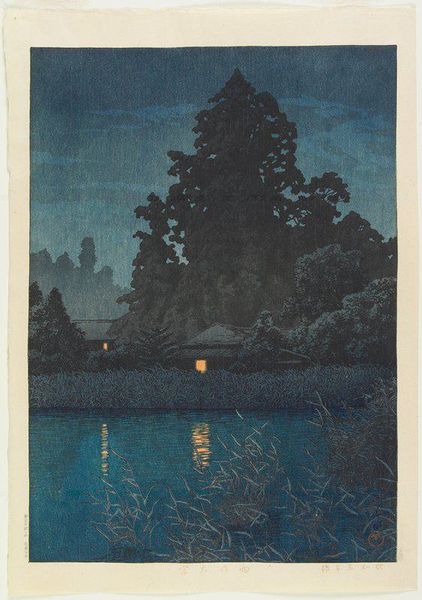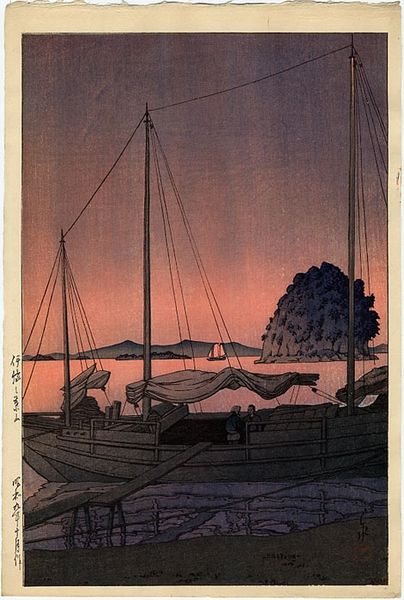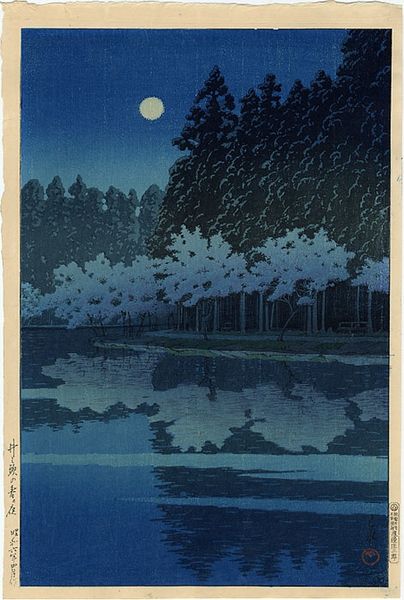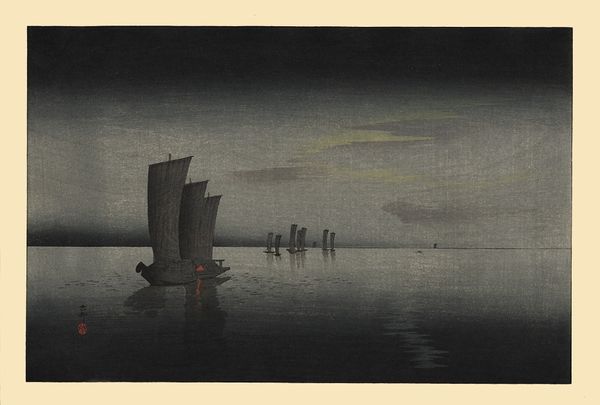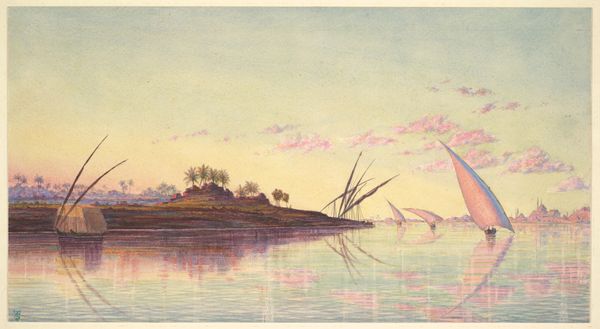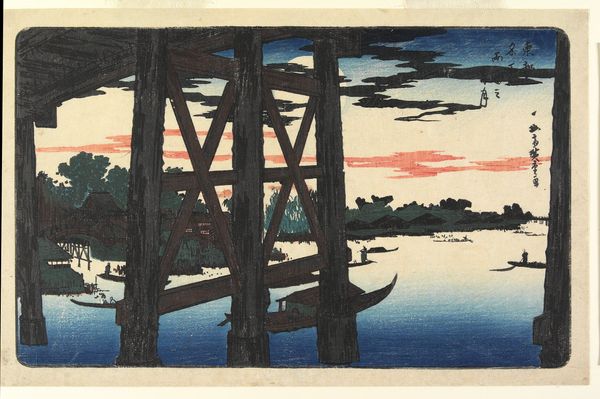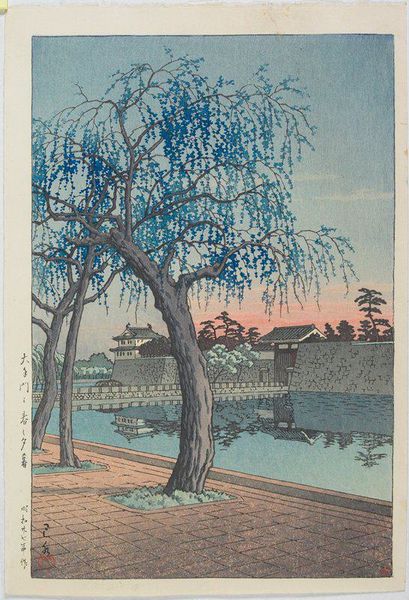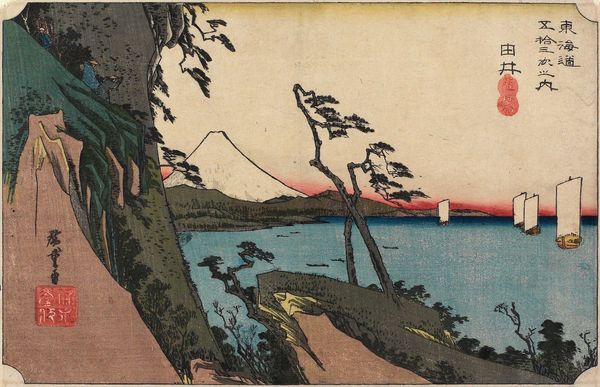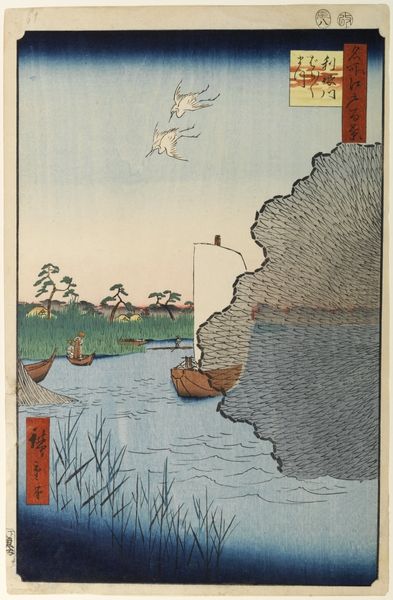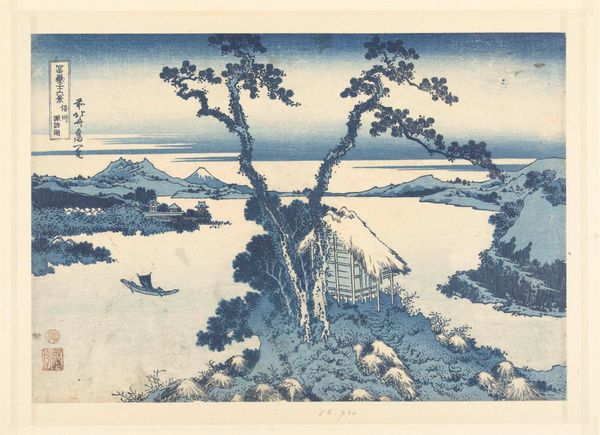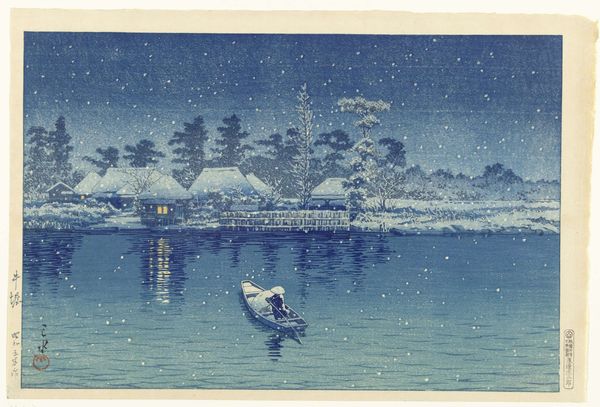
Copyright: Public domain Japan
Curator: What a captivating piece! The pervasive blue hues really set a tranquil, almost melancholic mood. Editor: Indeed. This is Hasui Kawase’s "Evening of Ushibori," a woodblock print crafted around 1930. Let’s consider its materiality. This print comes from a complex, collaborative process involving the artist, the block carver, and the printer. The artist creates the initial design, but the final image is the result of skilled craftsmanship by many hands. Curator: You can see that collaboration in the crisp lines defining the trees and the soft gradations of color in the water. It reminds me of a hazy memory, a dream lingering just out of reach. Editor: The Ukiyo-e tradition prized such landscapes for their ability to capture a sense of place and time. Here, the materials themselves—the wood, the ink, the paper—dictate the visual texture. We're not just seeing an image; we're seeing the labor of its making, from forestry all the way to this print in front of us. The repetition inherent in the printing process speaks volumes, allowing multiple individuals to access and purchase identical artworks and potentially display them identically in similar or completely different environments. Curator: Absolutely, and yet each print probably has its own subtle variations, doesn't it? Maybe the inking is a bit heavier in one spot, or the paper has a slightly different texture. Those little imperfections almost feel like brushstrokes. This isn't a slick, mass-produced thing. It's handcrafted poetry. Editor: Precisely. That tension between industrial processes and artistic intent is key. These were commercial objects, commodities reflecting leisure and the availability of resources required to engage in and consume art. However, one shouldn’t discredit the intention or artist vision either, something you picked up on quite adeptly earlier. Curator: And isn’t it remarkable that these scenes still resonate with us? To capture the mood and essence through what, even back then, were already age-old techniques. I look at the trees here and find they speak more about atmosphere than literal representation. Editor: So well-observed! This speaks to the enduring human desire to shape, interpret, and reflect upon the world through accessible and repeatable means. Curator: What a harmonious conclusion to a scenic trip down Ushibori. Editor: It truly has been!
Comments
No comments
Be the first to comment and join the conversation on the ultimate creative platform.
